5G and Beyond
We are working onbeyond 5G and 6G in general. Particularly, we are working from the following three perspectives:
-
Semantic Communications.
-
Antennas for Mobile and Satellite Communications.
-
Dual-band Dielectric Resonator Antenna (DRA).
-
Cognitive Radio: from Antennas to Intelligent Networking.
Semantic Communications
Zhijin Qin
Communications are categorized into three levels by Shannon and Weaver:
- Transmission of symbols. (The transmission level)
- Semantic exchange of source information. (The semantic level)
- Effects of semantic information exchange. (The effectiveness level)
Intelligent wireless communications: the substantial advances in machine learning (ML) and artificial intelligence (AI) pose significant performance improvement for wireless communications. While existing communication systems are facing bottlenecks of system capacity to support the massive number of wireless devices. We are performing pioneering work on deep learning enabled semantic communications to break up the bottleneck.
The existing communication system, which refers to the transmission level, cannot fulfil the demands from various intelligent tasks gradually due to the huge volume of generated data and limited spectrum resources. Semantic communication aims to understand the meaning behind the bit sequences and only send the useful information relevant to the transmission tasks at the receiver.

(a)

(b)
Figure 1: Illustration of Semantic Communication for (a) images and (b) texts.
The benefits of semantic communications are:
- Intelligence in the transmitter and receiver.
- Significant reduction of the data traffic.
- More robust to low SNR communications.
We are working on the DL-enabled semantic communications for different sources, i.e., text, audio, and images/videos.
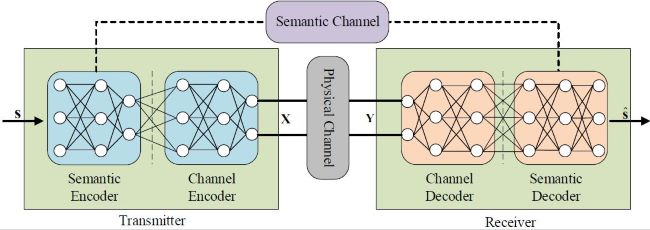
Figure 2:
Selected Recent Publications
- H. Xie, Z. Qin, G. Y. Li, and B.-H. Juang, “Deep learning enabled semantic communication systems,” https://arxiv.org/abs/2006.10685, May. 2020.
- H. Xie, and Z. Qin, “A lite distributed semantic communication system for Internet of Things,” IEEE J. Sel. Areas Commun. vol. 39, no. 1, pp. 142–153, Jan. 2021.
- Z. Weng, Z. Qin, and G. Y. Li, “Semantic Communications for Speech Signals,” https://arxiv.org/abs/2012.05369, Dec. 2020.
Antennas for Mobile and Satellite Communications
Xiaodong Chen
One of our traditionally strong areas is antenna design for mobile and satellite. For example, the figure below shows the prototype and current distribution of a dual-element planar inverted-F antenna for compact handheld MIMO terminals, designed together with Sony Mobile (known previously as Sony Ericsson). It is a planar inverted-F antenna (PIFA) operating in the 2.5 GHz band on a 40 mm by 100 mm printed circuit board (PCB), equivalent in size to a typical MIMO handset. The paper reporting this work has been highly cited (60+ citations as of May 2014).
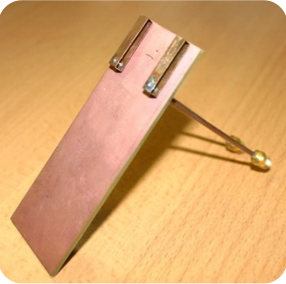
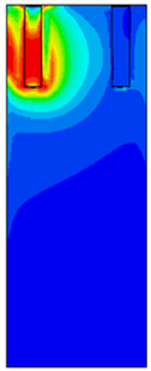
(a) (b)
Fig. 1 (a) A dual-element planar inverted-F antenna (PIFA) operating in the 2.5 GHz band. (b) The current distribution of duel-element PIFA.
Fig. 2(a) below is a novel design of a circular polarized antenna for multi-band L-band compact receivers. The design employs the concept of multi-stacked patches fed through a single coaxial probe. The details can be found in our paper. Further to this work, an enhanced design with multiple bands was licensed to SSBV Space & Ground Systems Ltd., and has been embedded on a satellite, as shown in the right figure below.
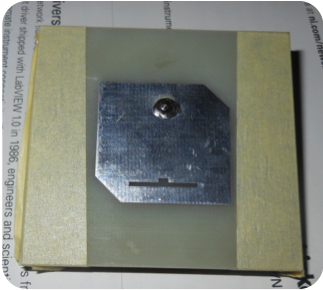
(a)

(b)
Fig. 2 (a) A circular polarized antenna for multi-band L-band compact receivers. (b) Antenna integrated into a satellite.
Dual-band Dielectric Resonator Antenna (DRA)
Clive Parini
We have developed a circular-polarization design of the dual-band Dielectric Resonator Antenna (DRA) for indoor access point applications. This is different from the conventional DRA by inserting air gap between the dielectric resonator and the ground plane, which offers more degrees of design freedom and wider bandwidth. The proposed box-matched DRA possesses two wide-band operation modes at 3.36-4.47 GHz (28.3%) and 4.60-6.78 GHz (38.3%), and keeps a 3 dB boresight axial ratio across 3.72-4.25 GHz (13.2%) and 5.45-5.85 GHz (7.08%). Consistent, directional radiation performance and antenna gain (4.7-6.5 dBi) over the two frequency ranges have been obtained. A simple fabrication process is employed, making the proposed DLA a low-cost candidate for indoor access point.

Fig. 3 (a) Side view of the box-matched dual-band DRA. (b) Top view. (c) Bottom view, showing the microstrip feedlines. (d) Photographs of the fabricated antenna.
Ultra-Wideband Antennas
Xiaodong Chen, Clive Parini, Akram Alomainy
State-of-the-art radio systems require antennas that are a) able to cover an ultra-wide range of operating frequency bands, and b) compact and yet robust enough to be mounted in settings that range from satellites to the human body. Our
pioneering work in understanding the operation of UWB antennas and systems has led to many publications in highly-cited and world-renowned journals, including the 2005 paper "
Study of a printed circular disc monopole antenna for UWB systems", which has been
cited more than 550 times, according to Google Scholar (as of May 2014). This paper demonstrated, for the first time, a printed version of the conventional disc monopole UWB antenna.
The work has also led to significant contributions to the UK Ofcom Spectrum Framework Review and the developments of new products and business opportunities, new technologies for assessing the EM emission on the mobile handset and for smart meter deployment, and wearable antennas deployed in the battlefield to reduce the load and smart communications for dismounted soldiers.
Selected Recent Publications
-
J Liang, CC Chiau, X Chen, CG Parini, "Study of a printed circular disc monopole antenna for UWB systems", IEEE Transactions on Antennas and Propagation, 53 (11), 3500-3504
-
Y. Gao, X. Chen, Z. Ying and C. G. Parini, “Design and Performance Investigation of a Dual-element PIFA Array at 2.5 GHz for MIMO Terminal,” IEEE Trans. On Antennas and Propagation, Vol. 55, No. 12, pp: 3433 - 3441, December 2007.
-
O. Falade, Y. Gao, X. Chen, and C. Parini, "Stacked Patch Dual-polarized Antenna for Triple-band Handheld Terminal Systems,” IEEE Antennas and Wireless Propagation Letters, vol.12, pp.202-205, 2013.
-
O. Falade, M. Ur Rehman, Y. Gao, X. Chen, and C. Parini, “Single Feed Stacked Patch Circular Polarized Antenna for Triple Band GPS Receivers”, IEEE Trans. On Antennas and Propagation, vol. 60, no. 10, October 2012.
Cognitive Radio: from Antennas to Intelligent Networking
Akram Alomainy
The development of reconfigurable antennas is considered to be very promising in modern and future communication systems. Reconfigurable antennas have made use of many reconfiguration techniques, including many that are centred upon switching mechanisms, such as PIN diodes or MEMS, and others that embed electronic devices (e.g., varactors) to achieve tunable behaviour. Other techniques, such as optical switches, mechanical structure changing or the ability to change the permeability or permittivity of smart substrate materials, have also been used. Reconfigurable antennas have created new horizons for many types of applications, especially in Cognitive Radio, Multiple-Input-Multiple-Output (MIMO) Systems, personal communication systems, satellites and many other applications.
Cognitive Radio is one of the potential wireless applications that may place severe demands on RF system designers and particularly antenna designers, when it comes to providing flexible radio front-ends capable of achieving the set objectives of the technology. The aim of this work is to investigate possible roles that different categories of reconfigurable antenna can play in Cognitive and smart Radio. Hence, our research focuses on investigating some novel methods to frequency-reconfigure compact ultra-wideband antennas to work in different bands; this will offer additional filtering to the radio front-end. In the ultra-wideband mode, the antenna senses the spectrum for available bands with less congestion and interference and, hence, decides on the most suitable part to use at that point, initiating the necessary reconfiguration, allowing reliable and efficient communication links between the radio devices. An ultra-wideband antenna with reconfigurable integrated notch capability is also demonstrated to provide further enhancement to interference rejection and improve the overall communication link. Furthermore, the design of novel pattern and polarisation reconfigurable antennas is also investigated to assist Cognitive Radio through spatial, rather than frequency, means.
An ultimate target for this research is to combine different degrees of reconfiguration into one compact, state-of-the-art antenna design that meets the growing demand of cognitive and smart radio devices for more intelligent and multi-functional wireless devices within the personal area network domains and beyond.


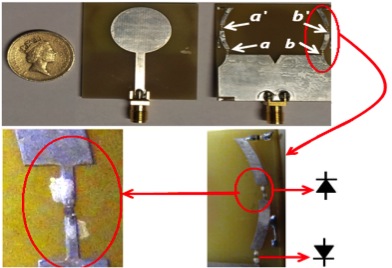
Selected Recent Publications
-
T. Aboufoul, C. G. Parini, X. Chen and A. Alomainy, "Pattern-Reconfigurable Planar Circular Ultra-Wideband Monopole Antenna", IEEE Transactions on Antennas and Propagation, Vol. 61, Issue 10, pp 4973-4980.
-
T Aboufoul, A Alomainy, C Parini, "Polarization reconfigurable ultrawideband antenna for cognitive radio applications", Microwave and Optical Technology Letters 55 (3), 2013, pp.501–506.
-
T Aboufoul, A Alomainy, C Parini,"Reconfigured and notched tapered slot UWB antenna for cognitive radio applications", International Journal of Antennas and Propagation, Volume 2012 (2012), Article ID 160219.
-
T. Aboufoul, A. Alomainy, "Reconfigurable UWB Antenna for Cognitive Radio Applications Using GaAs FET Switches", IEEE Antennas and Wireless Propagation Letters, Vol. 11:392–394 2012.

